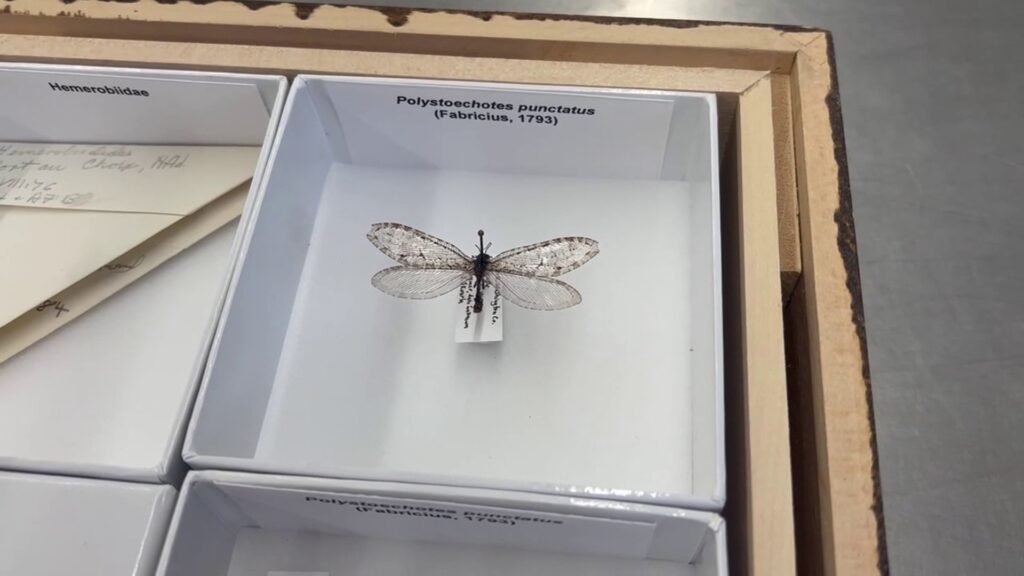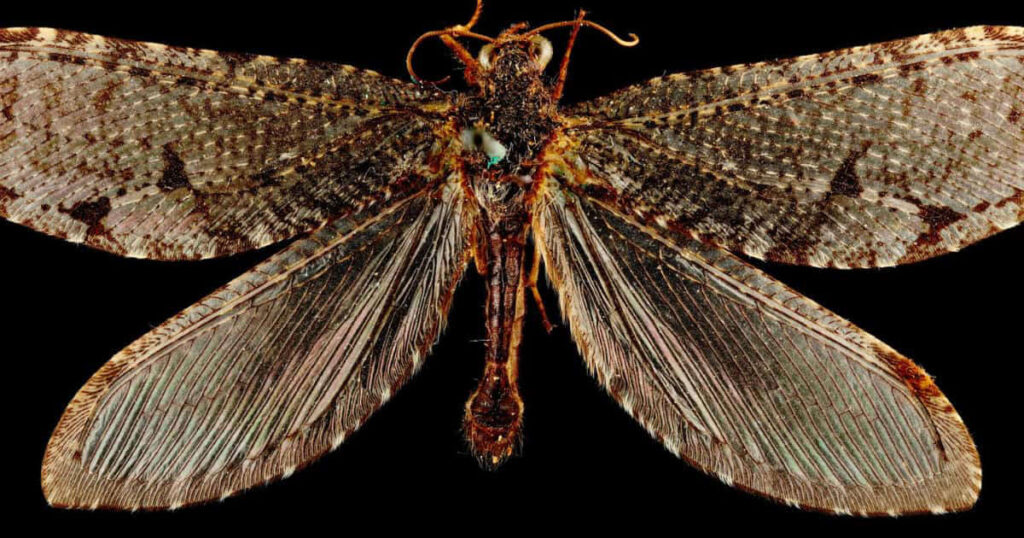
At the end of the Cretaceous Period, nearly 65 million years ago, over 75 percent of the Earth’s species didn’t survive. After inhabiting it for nearly 165 million years, the dinosaurs left planet Earth permanently. It isn’t certain what caused a species as large as the dinosaurs to be terminated, but evidence suggests it was likely an asteroid impact near the present-day Yucatan Peninsula, coupled with other possible factors such as large-scale climate change and destructive volcanic eruptions over time.
Despite the mass extinction, birds are thought to be the only dinosaurs that survived, along with distant relatives, such as lizards/reptiles, and smaller amphibians, such as frogs and salamanders. These animals had favorable traits that were long-lasting and they were able to quickly adapt to their changing environment.
A Chance Encounter
During a fortuitous Walmart run in 2012, Michael Skvarla, a PhD student from the University of Arkansas, came across a large insect on the side of the building in Fayetteville, Arkansas. He recounts that he thought the insect looked captivating and kept it between his fingers as he finished his shopping. Once he returned home, he mounted the insect, and actually forgot about it for nearly a decade. Initially, he misidentified it as a dragonfly-like insect called an antlion. The insect also has predominant features, such as a lacewing and long transparent wings.

In the fall of 2020, he revealed this fascinating insect to his online entomology class and came to the realization that this insect was much more than a dragonfly. It was something much more valuable and rare. After performing numerous DNA tests and analyses, he came to the conclusion that this insect belongs to the species Polystoechotes punctata, which is part of a larger family of insects that predates the dinosaurs. Skvarla is now an entomologist and director of Pennsylvania State University’s Insect Identification Lab, and the giant lacewing resides as part of the university’s Frost Entomological Museum’s collection.
Ecology Through Entomology
Entomology is a branch of zoology that studies insects, but it also acts as a resource to better understand the changing environment and ecology of a region. The giant lacewing disappeared from the eastern portion of North America in the mid 1900’s, and it’s predicted that it vanished because of human attempts to vanquish forest fires that occurred naturally.
The larger question is how this lacewing ended up on the side of a Walmart in an urban section of Arkansas. It might’ve been over a century since this insect could be spotted anywhere near this region, and it’s unlikely it would’ve flown thousands of miles to get here. Speculations suggest Arkansas’s ecosystem might’ve been more suitable for this insect compared to the changing environment in Washington.

When this giant lacewing was found far from Eastern North America, the understanding of its species was altered. It provided questions about what environment it needed to live its life cycle and what its true distribution across the region and across time actually is. This discovery has large implications, such as the fact that it predates the dinosaurs, managed to live thousands of miles from the habitat it vanished from, and that even small creatures such as insects can provide a larger lens into a region’s changing biodiversity and environment.


